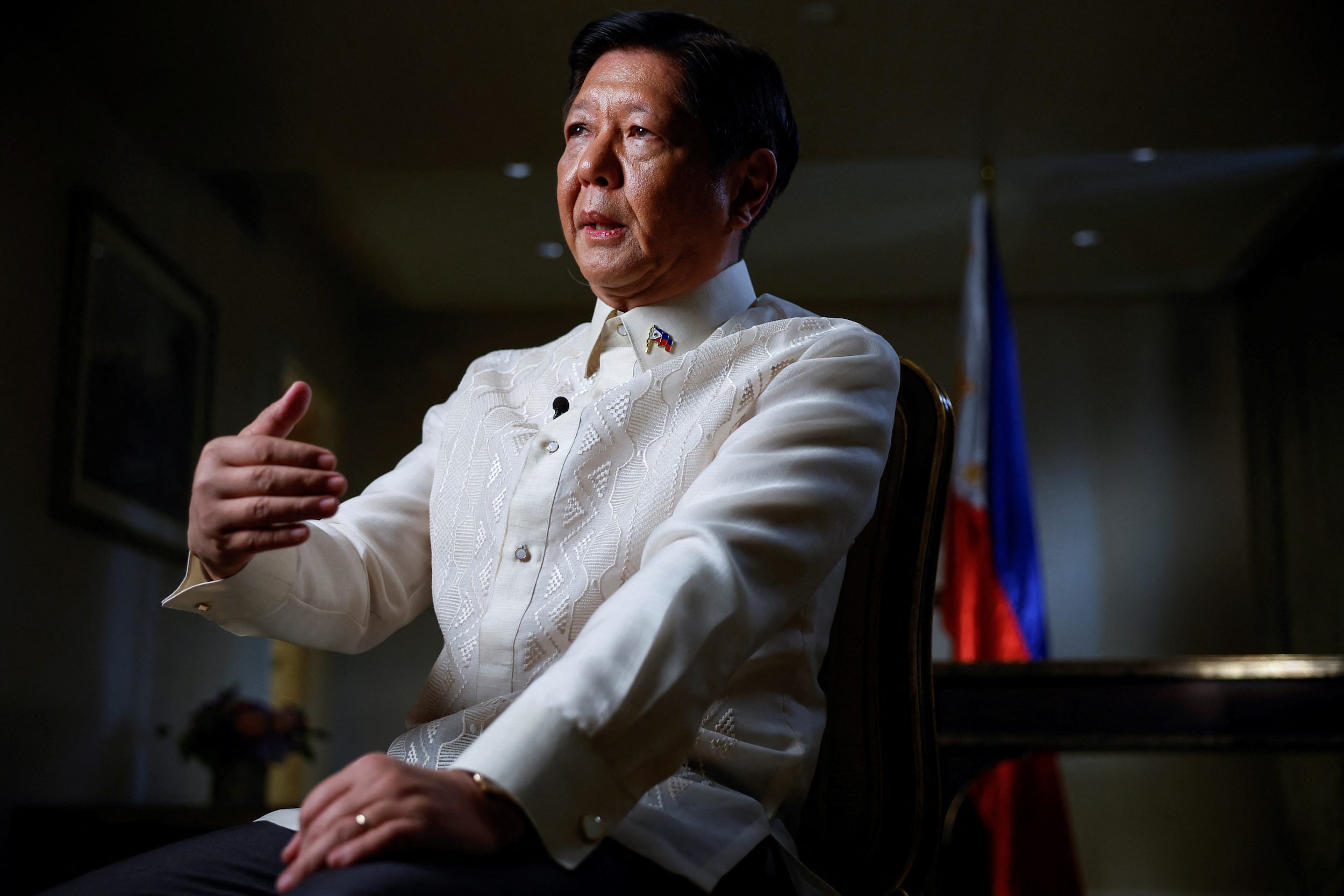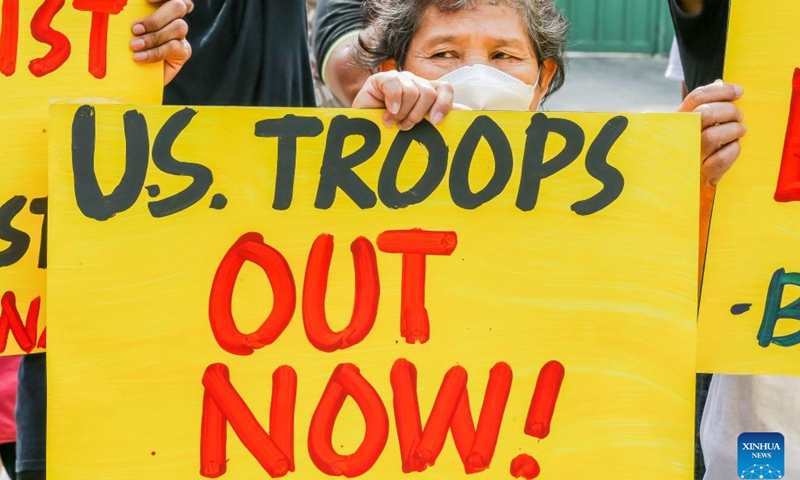From the Manila Standard (May 6, 2023): As China frets, PH-US defense pact cemented (ByCharles Dantes,Vince Lopez and 2 others)
President Ferdinand Marcos Jr. said Thursday he doesn’t feel alluded to by the latest statement of China opposing any interventions in the South China Sea after the Philippines and the United States announced new defense guidelines aimed at strengthening their alliance.
“As a Filipino and representing the Philippines, I don’t feel alluded to. How can we — how can anyone say that we are not a party to and [have no] interest in all these issues?” Marcos said in response to a question at a press conference in Washington D.C.
“I think that kind of statement was directed more towards the United States than it was [toward] the Philippines,” he added as he wrapped up his five-day official visit to the US.
The Philippines and the US have established bilateral defense guidelines to modernize the alliance “for a free and open Indo-Pacific region.”
The guidelines “reaffirmed that an armed attack in the Pacific, including anywhere in the South China Sea, on either of their aircraft or armed forces – which includes their Coast Guards – would invoke mutual defense commitments under the 1951 PH-US Mutual Defense Treaty.”
The Philippines and the US, the guidelines state, will expand cooperation on maritime security through but not limited to joint patrols.
Beijing expressed opposition to what it called meddling in the South China Sea to harm its territorial sovereignty and maritime rights.
Beijing also said the region should not be used as a “hunting ground.”
Marcos said the new United States-Philippines Bilateral Defense Guidelines, which chart their vision for alliance cooperation across all operational domains, will be responsive to the security challenges faced by both countries.
During a question-and-answer session at the Center for Strategic and International Studies (CSIS) in Washington, Marcos said “security and defense can no longer be isolated as one issue.”
“There are attendant and ancillary issues,” he said, citing economic issues. “We must be looking to adjust our relationship as we all are trying to adjust and to transform our economies.”
In a meeting at Pentagon on Wednesday, US Defense Secretary Lloyd Austin reaffirmed Washington’s commitment to bolstering the Philippines’ defense capabilities as the allies develop a Security Sector Assistance Roadmap to guide shared defense modernization investments over the next five to 10 years.
The new bilateral defense guidelines aim to direct a “whole-of-government coordination” as well as promote better coordination and bilateral planning to ensure the territorial integrity and security of both parties.
The guidelines would also institutionalize better interoperability and develop inter-agency capabilities of Philippine and American security establishments.
The President also stressed the need to focus on the new economy emerging from the post-pandemic world.
Asked about his takeaway from his meetings with US officials and lawmakers regarding international security, Mr. Marcos raised the need to protect the sovereignty of each nation in the face of the ongoing conflict between Russia and Ukraine.
“I think we are in full agreement that we must continue to protect the sovereignty, not just sovereign rights, but the sovereignty of each nation, no matter where they are, and that the situation in Ukraine cannot continue and it is something that is really anachronistic in the modern world,” he said.
The President said the Philippines had been straightforward in supporting the resolutions passed by the United Nations in the war in Ukraine.
“We respect the sovereignty and territoriality of every single nation in the world. And that applies most certainly because they are in this incredibly critical situation where an outright war is going on,” he said.
Mr. Marcos said nations should exert all possible efforts to bring peace to Ukraine.
Shortly after the bilateral meeting between Mr. Marcos and US President Joseph Biden, the Department of National Defense announced the finalization of the Philippines-United States Bilateral Defense Guidelines.
“With both countries’ commitment to ensuring the Mutual Defense Treaty’s continued relevance to addressing contemporary and emerging security challenges, the Philippines and the United States established the Bilateral Defense Guidelines, which support a mutual understanding of roles, missions, and capabilities within the framework of the alliance,” DND spokesperson Arsenio Andolong said in a statement Friday.
He added that its finalization is in line with the announcement of President Marcos to strengthen and redefine Philippines-United States relations and the roles of the two countries in the Asia-Pacific and Indo-Pacific regions.
The Bilateral Defense Guidelines intend to institutionalize key bilateral priorities, mechanisms, and processes to deepen alliance cooperation and interoperability across land, sea, air, space, and cyberspace.
It also recalls alliance foundations to include the reaffirmation of both countries’ commitment to the MDT and the conclusion of defense agreements and mechanisms that demonstrate the adaptability and evolution of the alliance in responding to both conventional and non-conventional challenges through the years.
Based on the guidelines, the two defense establishments aim to strengthen the defense partnership through enhancing alliance coordination and bilateral planning; expanding information-sharing; modernizing defense capabilities; deepening interoperability and people-to-people ties, combating transnational and non-conventional threats, and contributing to global and regional peace and stability.
“The release of the Bilateral Defense Guidelines marks an important milestone in the longstanding partnership between the Philippines and the United States. It serves as a testament to the strong and enduring partnership between the Philippines and the United States and reflects the shared commitment of both countries to uphold peace, stability, and the rule of law in the region,” the statement said.
China opposed the new defense guidelines, saying countries surrounding the contested waterway have maintained peace and stability in the region.
Mao Ning, the spokesperson of China’s Foreign Ministry, said Beijing “firmly opposes any country’s move to meddle in the South China Sea issue to harm China’s territorial sovereignty and maritime rights and interests by citing the guidelines.”
The Chinese official assailed the need for such since the situation in the contested waterway has been characterized by overall stability “with the concerted efforts of regional countries.”
China’s statement comes amid its own acts of aggression in the South China Sea, including conducting dangerous maneuvers against foreign vessels’ crew as well as fishermen, an incursion into others’ exclusive economic zone, and driving away fishermen from their local fishing grounds.
“I would like to stress that the South China Sea is the shared home for countries in the region, not a hunting ground for forces outside the region,” Mao said in her regular press briefing on Thursday night.
“When regional countries are committed to mutual trust, solidarity, cooperation and properly handling differences, they have in their hand the key to peace and stability in the South China Sea,” she said.
Former Department of Foreign Affairs secretary and current Philippine Ambassador to the United Kingdom Teddy Boy Locsin defended the new defense guidelines between Manila and Washington.
Locsin posted on his Twitter account that the US “is not moving to meddle in the South China Sea Arbitral Award issue.”
“But it must meddle if there is an attack on the public vessels of the only US military treaty ally in the world: the Philippines,” he said.
Locsin said protecting the Philippines is “the iron obligation of the US” under the Mutual Defense Treaty. The Philippines also has the same obligation as the US, he added. “It is a mutual defense treaty. Neither side gets a free ride.”
Camarines Sur Rep. Luis Raymund Villafuerte, meanwhile, said he hoped that joint maritime patrols in the West Philippine Sea would be undertaken not only with the United States but also with other allies such as Japan and Australia.
“With Beijing ignoring time and again the hundreds of diplomatic protests that have been filed by Manila over the nonstop intrusions of Chinese vessels into the WPS, I believe the best approach we can take at this point to put an end to such bullying tactics is for us to double down on plans for joint patrols in the disputed waterway with the US and other allies like Japan and Australia that seem open to such a border security arrangement,” Villafuerte said.
More than 200 diplomatic protests have reportedly been lodged by Manila against Beijing in recent years.
“That the incessant harassment of Philippine vessels in our very own territory has been increasing despite the series of official engagements between Beijing and Manila, ostensibly in pursuit of a peaceful resolution to this territorial dispute only illustrates that the Philippine government’s filing of diplomatic protests over and over against such Chinese bullying is a futile approach,” he said.
“China has repeatedly made a mockery of its diplomatic talks and avowed commitments with the Philippines on pursuing a peaceful settlement of the conflict, as such formal engagements this year have only become a prelude to more, instead of less, Chinese intrusions into our territorial waters and EEZ,” Villafuerte said.
“The asymmetry between Beijing’s rhetoric and action on this thorny territorial issue is as clear as day,” he said, pointing out that the trio of Manila-Beijing diplomatic engagements this year had been followed by even more intense bullying tactics by China in the WPS.
On Thursday, Israel expressed interest in taking a “major” part in the Horizon 3 of the Armed Forces of the Philippines’ modernization program.
During the Horizons 1 and 2 of the program, Israel successfully delivered artillery, howitzers, and armored personnel and mortar carriers to the Philippines.
“Israeli companies are interested to continue what’s started in the last few years where Israel has become, I think an important and reliable supplier of quality and reliable equipment,” Israeli Ambassador to the Philippines Ilan Fluss said during the 75th Israel Independence Day reception Thursday night.
“We’re looking into the future of the Horizon 3 modernization program. And obviously, we do hope that Israel will also take a major part in the Horizon,” he added.
Fluss said the two more Israeli Shaldag Mark 5 ships — fast attack interdiction craft-missile (FAIC-Ms) in the Philippine Navy (PN) — would be formally turned over soon as part of the nine vessels that the country contracted from the Israel Shipyards Ltd.
These FAIC-Ms, which will form part of the Navy’s Acero-class patrol gunboats, are among the 2019 projects approved by former President Rodrigo Duterte under the Horizon 2 list of the modernization program.
https://manilastandard.net/news/314328155/as-china-frets-ph-us-defense-pact-cemented.html

























